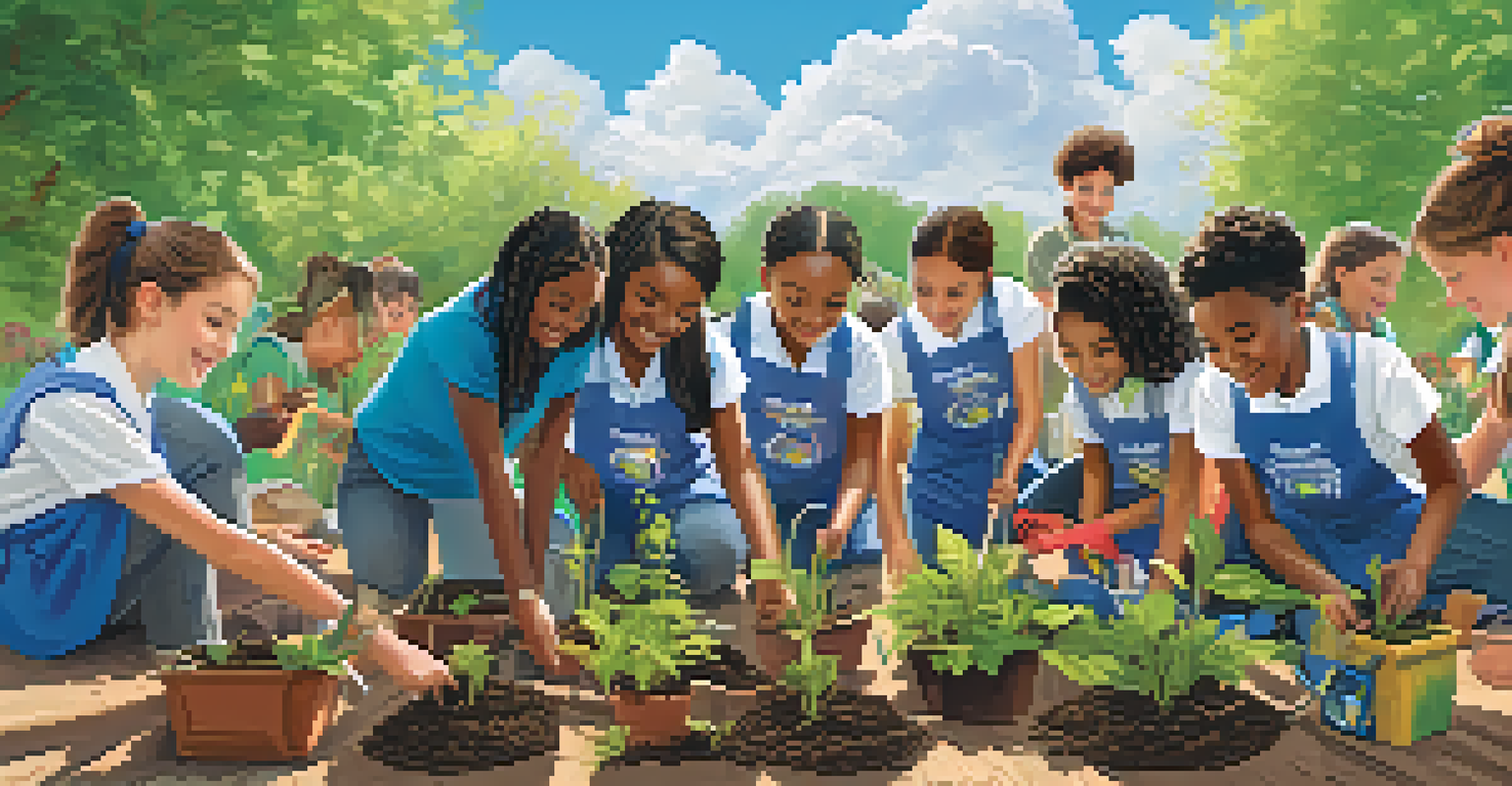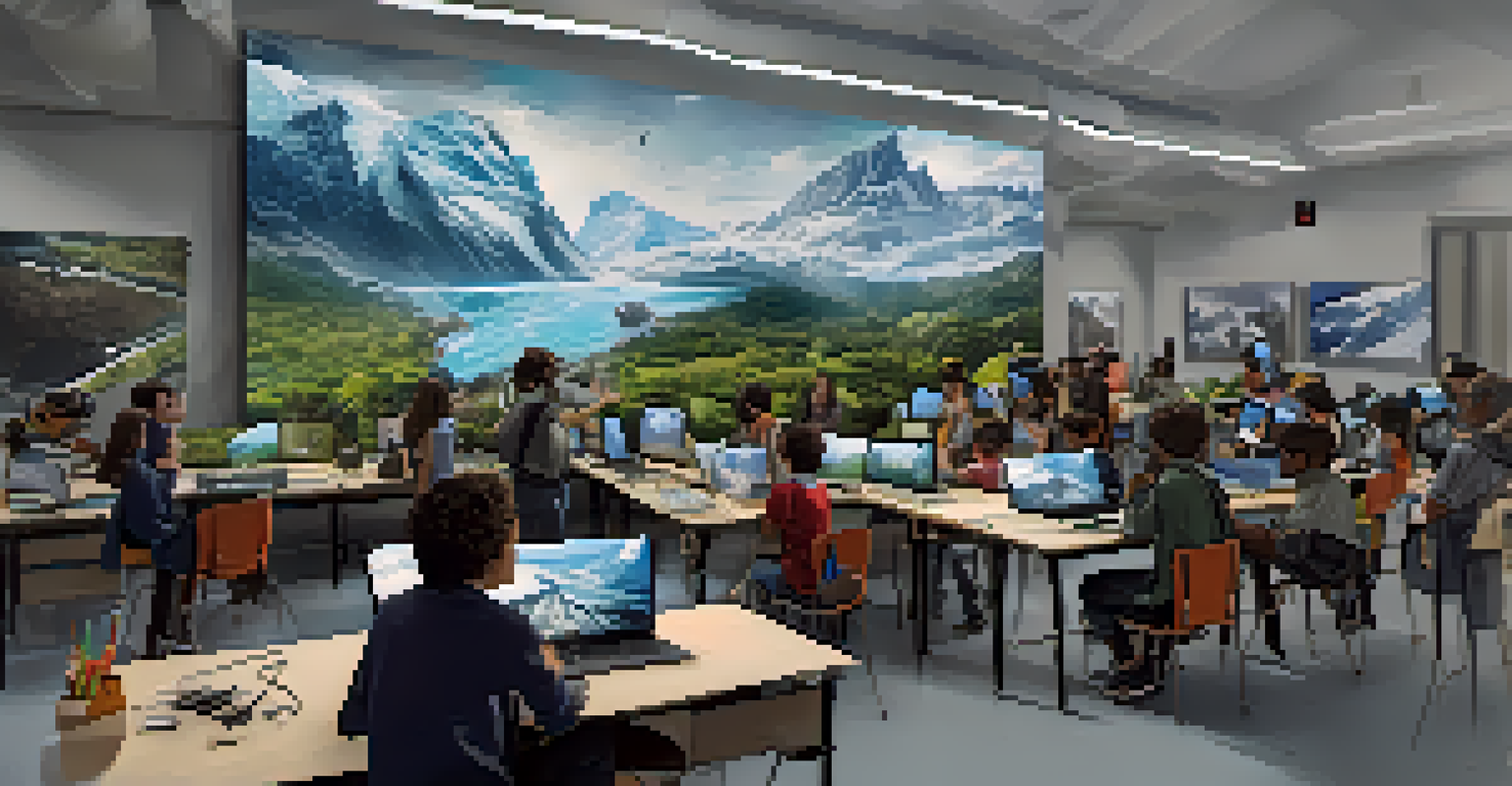Interdisciplinary Approaches to Teaching Climate Change

Understanding Climate Change Through Multiple Disciplines
Climate change is a complex issue that impacts various aspects of life, making it essential to approach it from multiple disciplines. Science, economics, sociology, and even art all offer unique perspectives that can enhance understanding. By integrating these fields, educators can create a richer learning experience that resonates with diverse student interests.
We do not inherit the earth from our ancestors, we borrow it from our children.
For example, a science lesson on greenhouse gases can be paired with economic discussions on carbon pricing. This not only illustrates the scientific principles but also highlights the real-world implications of climate change policies. Such interdisciplinary connections can spark deeper discussions and encourage critical thinking among students.
Moreover, incorporating art into climate education allows students to express their feelings and thoughts creatively. This approach can help foster empathy and a personal connection to the topic, making the lessons more memorable and impactful.
Hands-On Learning: Engaging Students in Climate Action
One of the most effective ways to teach climate change is through hands-on learning experiences. Projects that involve real-world applications, like community clean-up or tree planting, help students see the tangible impact of their actions. These activities not only reinforce classroom concepts but also inspire a sense of responsibility towards the environment.

Additionally, simulations and role-playing exercises can immerse students in climate-related scenarios, allowing them to explore solutions actively. For instance, a classroom could simulate a city council meeting where students debate climate policies, helping them grasp the complexities of decision-making in the face of climate challenges.
Interdisciplinary Climate Education
Integrating science, economics, and art in climate education creates a richer and more relatable learning experience for students.
Through these interactive methods, learners not only gain knowledge but also develop skills like teamwork and problem-solving, which are crucial for tackling climate issues in the future. This engagement can transform passive learning into a proactive approach to environmental stewardship.
Utilizing Technology to Enhance Climate Change Education
In today's digital age, technology plays a pivotal role in education, especially in teaching complex issues like climate change. Utilizing tools such as virtual reality (VR) can transport students to melting glaciers or deforested areas, allowing them to witness the effects of climate change firsthand. This immersive experience can evoke strong emotional responses and a deeper understanding of the stakes involved.
The greatest threat to our planet is the belief that someone else will save it.
Moreover, online platforms and educational apps can facilitate collaborative projects between classrooms across the globe. By connecting students from different regions, they can share local climate impacts and mitigation strategies, broadening their perspective and fostering a sense of global community.
Integrating technology not only makes learning more engaging but also prepares students for a future where tech-savvy approaches will be essential in addressing climate challenges. By combining technology with interdisciplinary learning, educators can create a powerful toolkit for climate education.
The Role of Local Context in Climate Change Education
Every community experiences climate change differently, making local context an invaluable element in educating students about this global issue. By incorporating local environmental data and case studies, educators can help students relate personally to the material. For example, discussing how rising sea levels affect coastal towns can make the abstract concept of climate change much more tangible.
Field trips to local ecosystems or climate-related sites can further enhance this connection. Students can observe the effects of climate change in their own backyards, fostering a sense of urgency and responsibility. This localized approach not only enriches learning but also empowers students to take action in their communities.
Hands-On Learning Engagement
Real-world projects, such as community clean-ups, empower students to see the tangible impacts of their actions on the environment.
Incorporating local context also opens doors to collaboration with community organizations, local governments, and scientists. Such partnerships can provide students with insights and opportunities to get involved in ongoing climate initiatives, reinforcing the importance of civic engagement.
Encouraging Critical Thinking and Problem-Solving Skills
Teaching climate change shouldn't just be about presenting facts; it should also nurture critical thinking and problem-solving skills. By challenging students to analyze data, evaluate solutions, and debate various viewpoints, educators can help them develop the analytical skills necessary for addressing complex issues. For instance, students can be tasked with researching different energy sources and presenting their pros and cons.
Moreover, case studies of successful climate initiatives can provide concrete examples for students to analyze. By understanding what worked and what didn’t, they can learn valuable lessons about resilience and innovation in the face of climate challenges. This analytical approach encourages students to think beyond the surface and consider the intricacies of climate action.
Ultimately, fostering critical thinking prepares students not only for academic success but also for their roles as informed citizens who can contribute to meaningful climate solutions. By equipping them with these skills, educators help shape the next generation of environmental leaders.
Building Empathy Through Climate Change Narratives
Storytelling is a powerful tool in education, especially when it comes to conveying the human impact of climate change. Sharing narratives of individuals and communities affected by climate issues can evoke empathy and motivate students to take action. These stories can range from those of farmers facing drought to families displaced by rising seawater, making the global issue personal.
By incorporating literature, documentaries, and even podcasts into the curriculum, educators can expose students to diverse perspectives on climate change. This not only enriches their understanding but also highlights the interconnectedness of our world. When students see how climate change affects real people, they are more likely to feel compelled to engage with the topic.
Empathy Through Storytelling
Sharing personal narratives about climate change fosters empathy and motivates students to engage actively with the topic.
Furthermore, encouraging students to share their own stories or those of their communities can foster a deeper connection to the material. This exchange of narratives can create a supportive classroom environment where students feel valued and empowered to express their thoughts and concerns about climate change.
Collaborative Learning: Engaging with Peers on Climate Issues
Collaboration is key in addressing climate change, and fostering a collaborative learning environment in the classroom can mirror this necessity. Group projects and discussions encourage students to work together, share ideas, and develop solutions collectively. This teamwork not only enhances understanding but also builds communication skills that are vital for future climate advocacy.
For instance, students can collaborate on a project to design a sustainable school initiative, pooling their diverse skills and perspectives. Such projects not only promote teamwork but also empower students to translate their learning into actionable change within their communities.

Moreover, collaborating with external organizations, such as local environmental groups, can provide students with real-world experiences and connections. These partnerships can broaden their network and inspire them to become actively involved in climate action beyond the classroom.